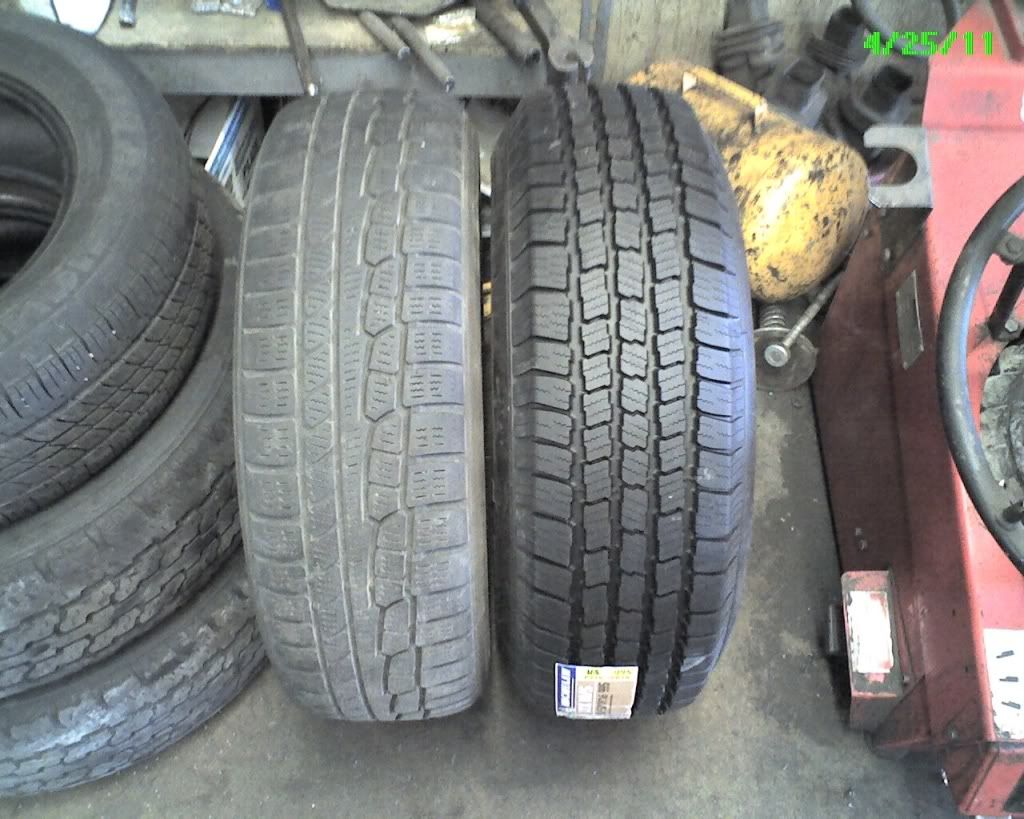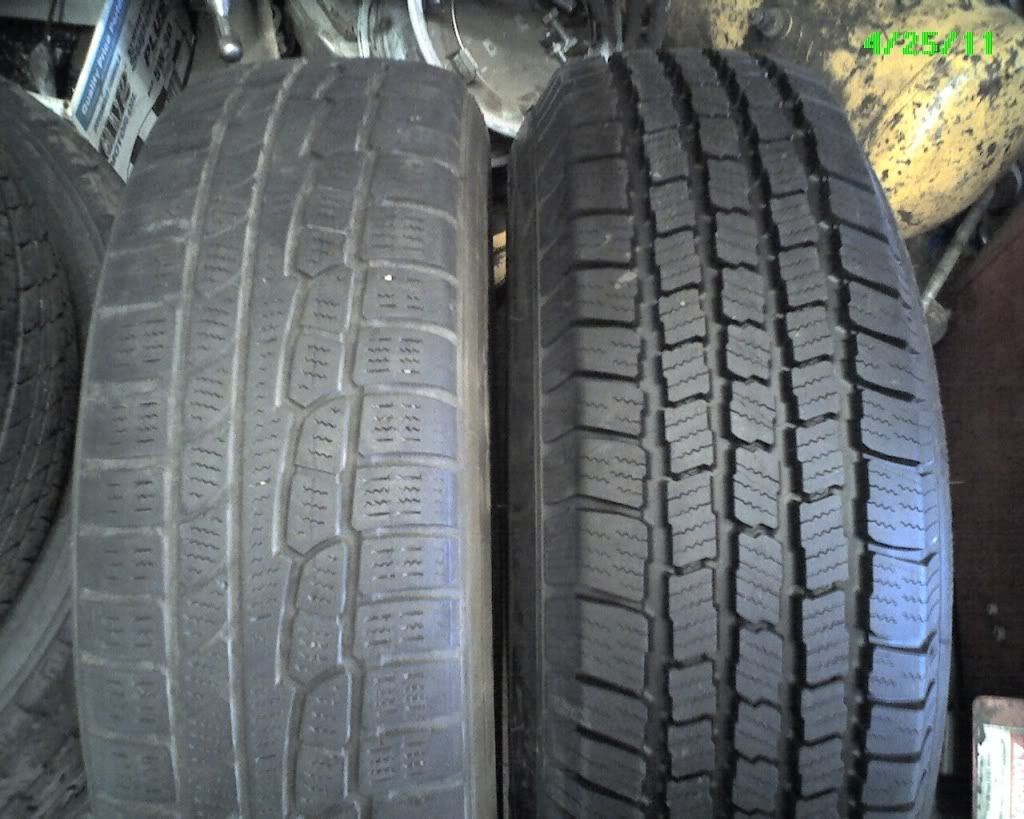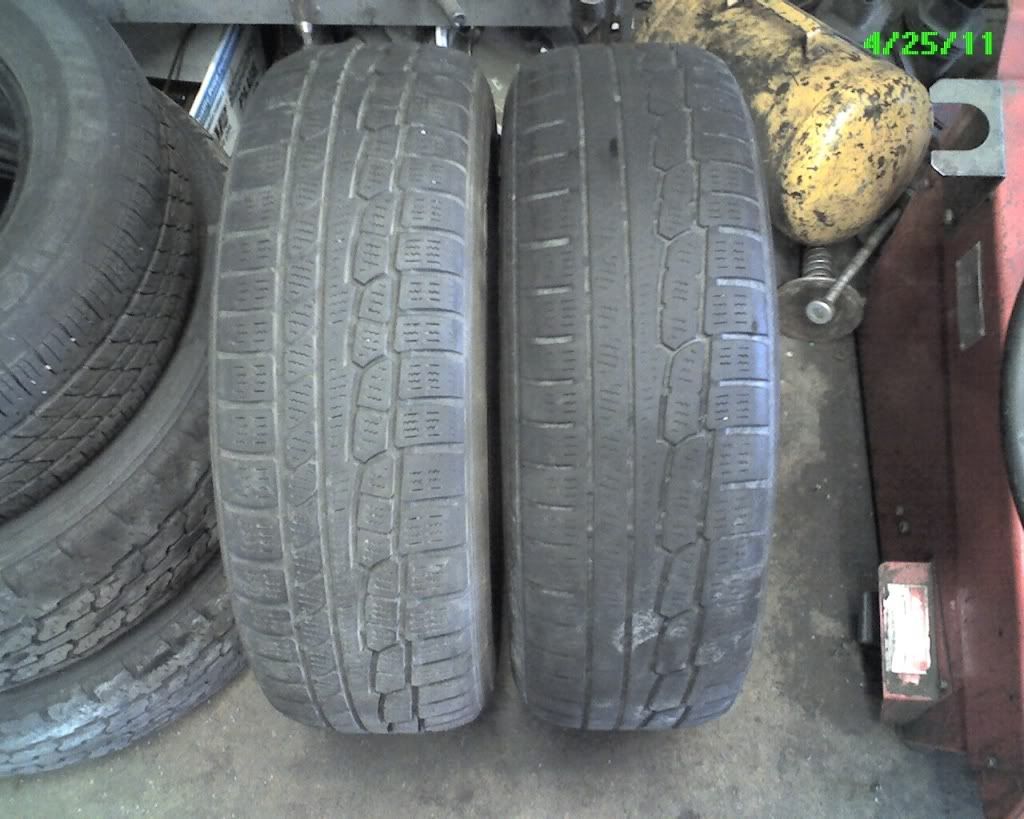AstroTurf
Thread starter
Originally Posted By: Astro14
Here's my recommendation: determine the pressure and then check it cold, at least monthly, to account for leakage and variations in pressure based on seasonal temperature changes...that way, you will always be at/near optimum, instead of way off most of the time. Futher, if you pick up a nail or develop a slow leak, you will catch it before your handling and safety are affected.
And yes, running 38 PSI (sidewall max, 51, manufacturer placard recommended max 38) in the 235/45R17 Fuzion ZRi tires on my T5 Volvo, I wore out the center of the tread before the edges. A difference of nearly 2/32" in tread wear from center to edge. Clearly too high a pressure for my conditions. I now run 36 PSI in the 235/45R17 Conti DWS and they are wearing evenly with 8,000 miles on them...giving me the optimum blend of treadwear, handling and economy (I get EPA or better in the car...if I can resist using all the boost the turbo offers...).
Taking the purchase price of tires into consideration ($500 mounted and balanced), the life that the Fuzions lasted (30K) and the original tread depth (10/32)...the uneven treadwear cut about 20% of the life off the Fuzions...costing me over $100 in premature wear. That alone is enough to make checking frequently a worthwhile maintenance practice...and a tread depth gauge is about $5, while a good pressure gauge is $10...a cheap investment.
For the record, on an airplane, where tires go from -65 degrees C and zero MPH to nearly 200 MPH with several tons of loading in thousandths of a second (and can easily heat up to over 300 degrees C during braking), several orders of magnitude greater strain in load, temperature and speed than car tires, I check the pressure on every flight.
Another Great Story Astro14...
Sorry to hear about the premature wear of your tires.
Did/Do you check your tread depth on a regular basis?
Did you notice any handling issues while traveling overinflated?
Please be careful using all that boost that your turbo has to offer.
(I heard it can become addictive, not to mention unsafe)
Once again Thanks, Jim
PS When I was in the Air Force, We had people for that.
I mean, come on, Making a Pilot check his own tire pressure.
Navy Life is tough...
Oh, and Thanks for your Service for Our Country.
Here's my recommendation: determine the pressure and then check it cold, at least monthly, to account for leakage and variations in pressure based on seasonal temperature changes...that way, you will always be at/near optimum, instead of way off most of the time. Futher, if you pick up a nail or develop a slow leak, you will catch it before your handling and safety are affected.
And yes, running 38 PSI (sidewall max, 51, manufacturer placard recommended max 38) in the 235/45R17 Fuzion ZRi tires on my T5 Volvo, I wore out the center of the tread before the edges. A difference of nearly 2/32" in tread wear from center to edge. Clearly too high a pressure for my conditions. I now run 36 PSI in the 235/45R17 Conti DWS and they are wearing evenly with 8,000 miles on them...giving me the optimum blend of treadwear, handling and economy (I get EPA or better in the car...if I can resist using all the boost the turbo offers...).
Taking the purchase price of tires into consideration ($500 mounted and balanced), the life that the Fuzions lasted (30K) and the original tread depth (10/32)...the uneven treadwear cut about 20% of the life off the Fuzions...costing me over $100 in premature wear. That alone is enough to make checking frequently a worthwhile maintenance practice...and a tread depth gauge is about $5, while a good pressure gauge is $10...a cheap investment.
For the record, on an airplane, where tires go from -65 degrees C and zero MPH to nearly 200 MPH with several tons of loading in thousandths of a second (and can easily heat up to over 300 degrees C during braking), several orders of magnitude greater strain in load, temperature and speed than car tires, I check the pressure on every flight.
Another Great Story Astro14...
Sorry to hear about the premature wear of your tires.
Did/Do you check your tread depth on a regular basis?
Did you notice any handling issues while traveling overinflated?
Please be careful using all that boost that your turbo has to offer.
(I heard it can become addictive, not to mention unsafe)
Once again Thanks, Jim
PS When I was in the Air Force, We had people for that.
I mean, come on, Making a Pilot check his own tire pressure.
Navy Life is tough...
Oh, and Thanks for your Service for Our Country.





